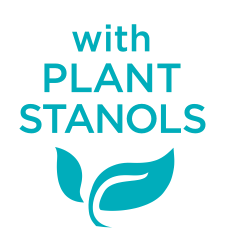What are the main types of cholesterol in our body?
When we talk about the different types of cholesterol circulating in our blood, we’re usually talking about lipoproteins. That’s because cholesterol cannot travel around our body to where it’s needed – as it’s not able to mix with our blood – so out liver packs cholesterol and fat into water-soluble vehicles called lipoproteins. These combos of cholesterol, proteins and fat are called lipoproteins (lipo comes from the Greek word for fat).
There are two main groups of lipoproteins:
1. Non-high density lipoproteins (non-HDL) or so-called ‘bad’ cholesterol
Bad cholesterol is mainly made up of low-density lipoproteins (LDL). Their role is to transport cholesterol from the liver to destinations that need it, such as our tissues. But, if there’s too much LDL cholesterol in our blood, there’s a greater chance that it will be discarded in our arteries, clogging them up and making them stiff with atherosclerosis.
So it’s important to try and keep your non-HDL and LDL at lower, healthier levels to reduce your risk of developing coronary heart disease.
2. High-density lipoproteins (HDL) – ‘good’ cholesterol
It is often called ‘good’ cholesterol because they carry excess cholesterol away from the arteries and take it back to the liver where some of the cholesterol is re-used and some is packed into bile. So maintaining your HDL level at or above the recommended level is good.
